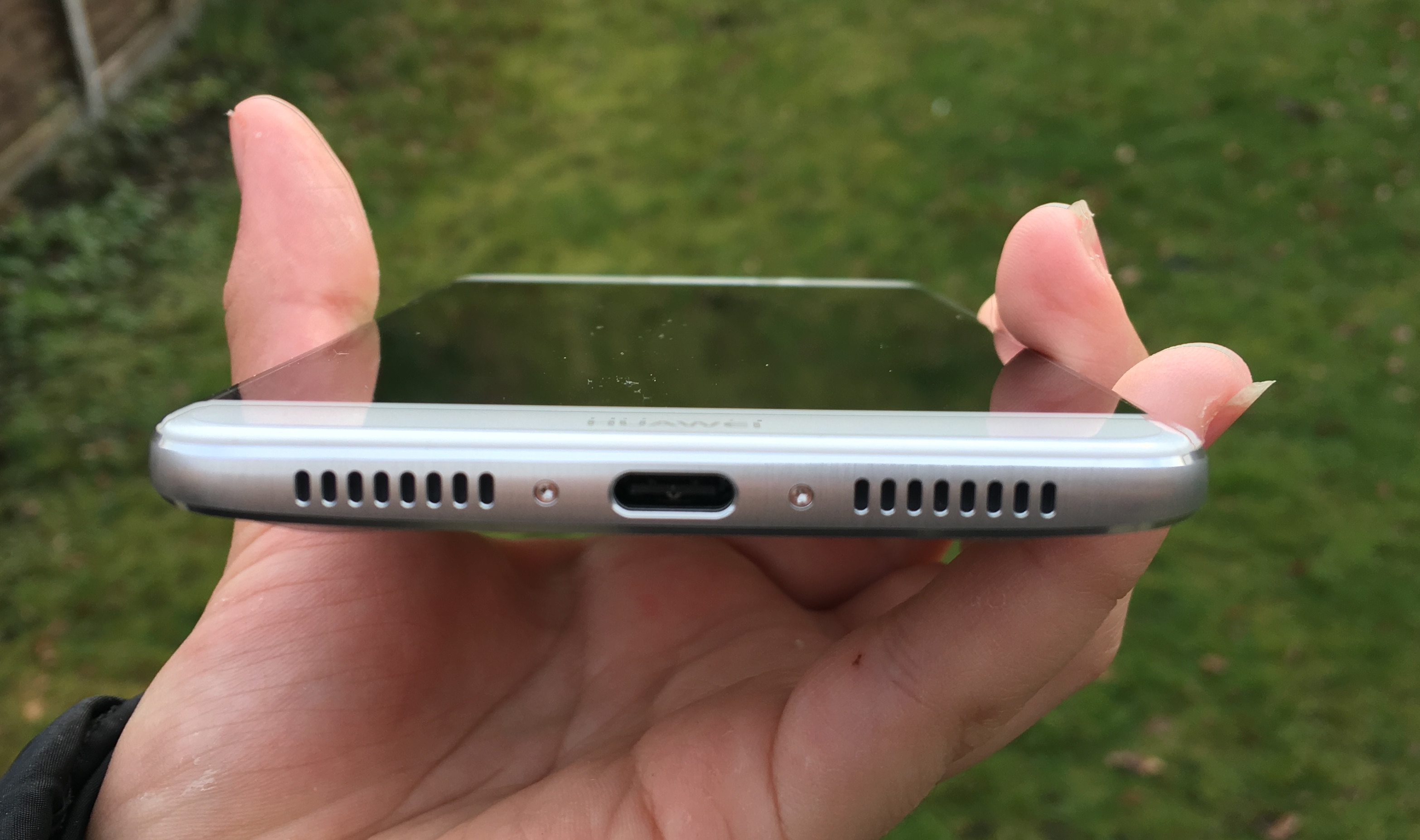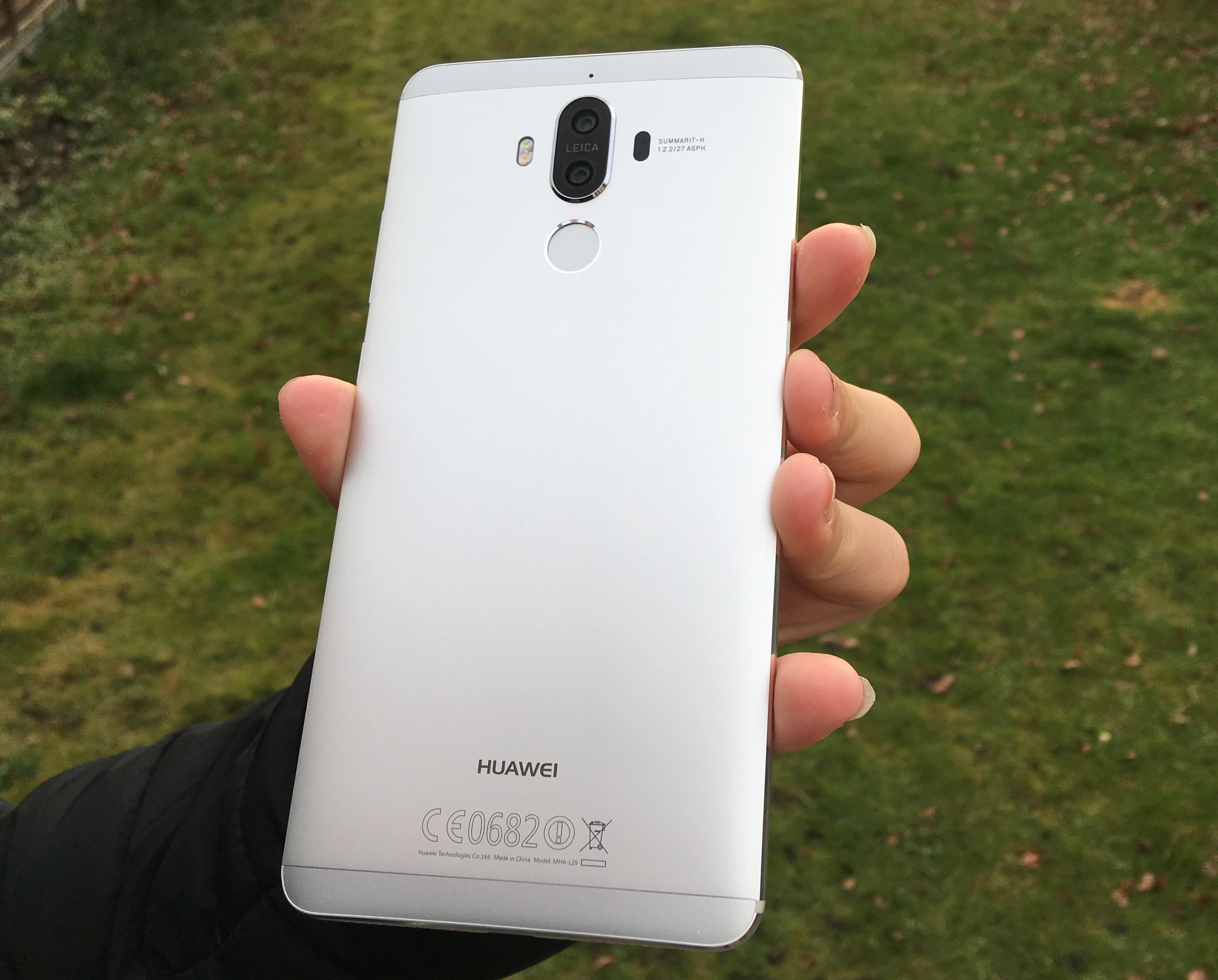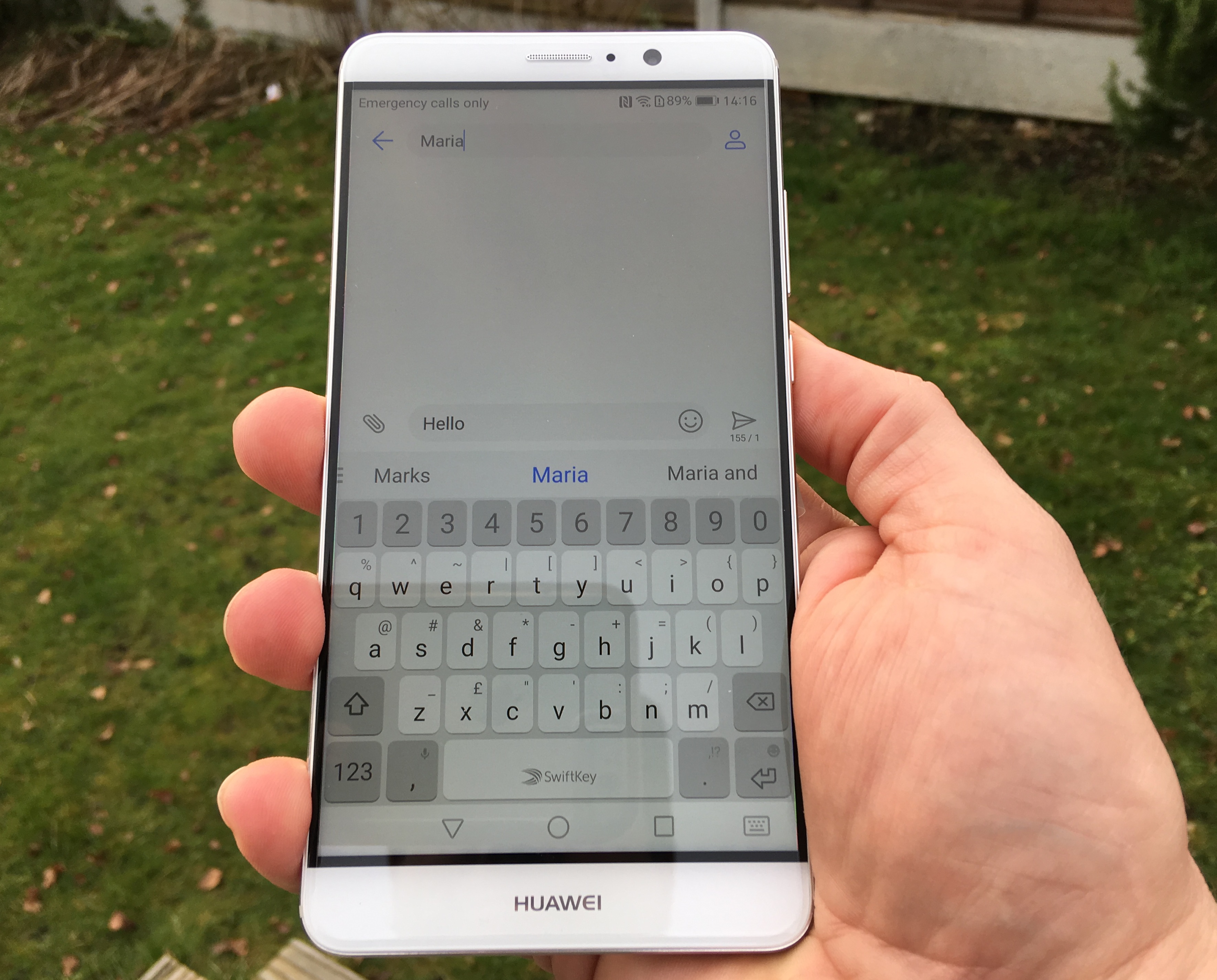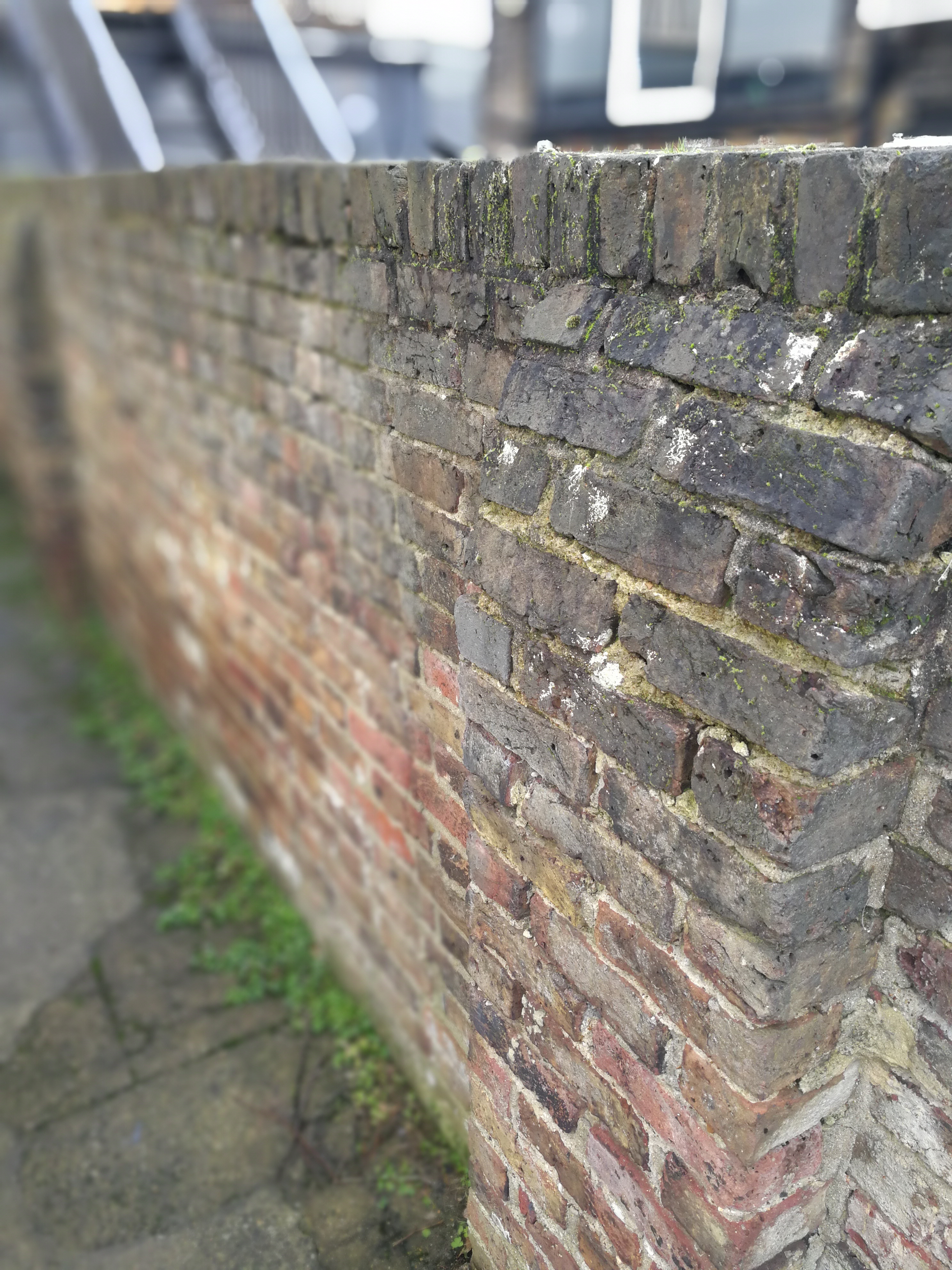Huawei Mate 9 review
Can Huawei's phablet take on the Pixel XL and iPhone 7 Plus?

While we wait for Samsung to bring out a large-screen smartphone that doesn’t explode, Huawei certainly has a worthy contender to the phablet throne that literally won’t burn a hole in your pocket.
-
+
Extra-long battery life Fast, stable performance Flagship phone at a reasonable price
-
-
Not waterproof Only Full HD display User interface still suffers from idiosyncrasies

Huawei's Mate 9 smartphone has been available since last November, but it's still not out in the UK. However, with the US launch having taken place on 6 January, we look ahead to whether the phone canrival the Google Pixel XL and iPhone 7 Plus.
With its large display, the Huawei Mate 9 is certainly aimed at the higher-end of the market (although the Porsche Design version certainly looks to the very top-end). But is it poised to steal users of the ill-fated Samsung Galaxy Note 7 looking for a large phone that doesn't turn into a fireball?
Design
The Huawei Mate 9 comes in a variety of colours: Black, Space Grey, Moonlight Silver, Champagne Gold, Mocha Brown, and Ceramic White. There is also a Porsche Design Mate 9 in Graphite Black.

The Mate 9 is a beast. It has a 5.9in display, and while it is by no stretch a small phone, it is more pleasing to hold in the hand than the iPhone 7 Plus or Google Pixel XL. It has a curved back finished in aluminium that fits in your palm better, as well as narrower bezels, giving you more display without straining your hand.
Users of the previous Mate 8 will no doubt be wondering what has changed. In fact, the Mate 9 looks extremely similar to Mate 8 to the point where you ask if this is no more than a minor upgrade.
On the right are power and volume keys, with a USB-C port at the base with one of the dual speakers. The headphone jack and infrared port both sit at the top edge of the chassis.
Sign up today and you will receive a free copy of our Future Focus 2025 report - the leading guidance on AI, cybersecurity and other IT challenges as per 700+ senior executives

Around the back is the dual-camera in a vertical layout, compared with the horizontal arrangement on the iPhone 7 Plus. Below this sits the fingerprint sensor. The camera is slightly raised, giving it a bump not unlike the one on the iPhone 6.
Hardware
Display
The Mate 9 measures 157mm x 79mm x 7.9mm, similar in size to the iPhone 7 Plus but with more display real estate.
Its 5.9-inch display features a 1,920 x 1,080-pixel resolution, offering 373 pixels per inch. While this is good enough for everyday apps, the screen isn't quite up to the resolution Note 7 users enjoyed with its 2,560x1,440 display (515 pixels per inch), while the Pixel XL boasts 535 pixels per inch. It is important to note here that the Mate 9's sibling, the Porsche Design Mate 9, manages Quad HD in its slightly smaller 5.5-inch AMOLED display.As more and more smartphones become used for virtual reality purposes, where the screen is necessarily very close to your eyes, you really will notice this issue. This leaves the Mate 9 not terribly well-suited for VR, which is surprising as we found that the phone is also Daydream VR-ready.
That said, the screen is nice and bright and works well in office situations, where garish lights can often make displays look terrible.
Processor and RAM
The Mate 9 sports an Octa-core Kirin 960 processor, Mali-G71 MP8 GPU i6 co-processor and 4GB of RAM. The Kirin 960 processor uses the ARM's new Cortex-A73 core design and features four A73s running at 2.4GHz with four lower-power Cortex-A53 cores for less arduous tasks.
ARM's new Mali-G71 8-core GPU also appears here, the latest graphics processor that is also expected to appear in the Samsung Galaxy S8 later this year.
There have been a number of software tweaks (see below) that make swiping and swapping between apps and pages very quick. We found no noticeable performance lag or slowdown, and it also offers the added benefit that apps rarely crash in normal usage.
Its 64GB of onboard storage can be supplemented via the microSD slot with another 265GB, and the phone also boasts UFS 2.1 storagefor fast accessibility of files and data.
Fingerprint scanner

The fingerprint scanner sits on the back underneath the Leica branded dual-lens camera. While this works well when you are holding the phone, it can quickly become irritating to unlock your phone if you have it sat next to your laptop.
Software
Like most big-name Android phones, the Mate 9 has its own user interface - in this case, the Emotion UI (EMUI). Now on version 5, it is somewhat of a redesign with a greater emphasis on decluttering.

EMUI 5.0, based on Android 7.0Nougat, and is a major improvement. Preloaded apps have also been overhauled, giving them white backgrounds, grey accents and blue highlights. This is all more inkeeping with the recent Android design ethos, and less ugly like so many other Android skins we have seen over the last few years.
That said, it does try a little too hard to look like an iOS clone rather than stand on its own design feet - note how the folder icons below look pretty similar to iOS's own.

However, the UI is now easier to navigate, and around 90% of your go-to apps and functionality can be found within three taps on the display.
Huawei has also improved the app drawer option, enhanced notifications and quick settings, as well as split screen mode. There is a new element of machine learning, as Huawei claims the device analyses user behaviour and changes the device accordingly for a better, more personalised experience.
Also promised in the phone, but not yet available, is Amazon Alexa. This will be the first time that the Amazon AI assistant has made an appearance outside of the Amazon Echo and Amazon Echo Dot. Sadly, despite updating to the latest software, this did not appear to have installed so we couldn't test this particular function. We will update the review once this appears.
Camera
Huawei has continued its partnership with Leica. The Mate 9 has a dual camera set-up on the rear, similar to its efforts with the P9. The 12-megapixel camera takes colour images while the 20-megapixel shoots only in monochrome. Both cameras take appealing images and in combination, claims Huawei, deliver a more detailed image than what you may get from just a single lens.
This is because the black and white lens delivers the detail while the colour lens gives you, erm, the colour. Regardless of the theory, the images produced are very good. Although in low light it has some trouble with focusing.

A shot from Huawei Mate 9's camera
There is also a Pro mode that allows the user to change camera settings to take better shots, although you need to be clued up as to what ISOs and f-stops are before plunging into this.
Another benefit of the dual-lens set-up is the wide aperture mode. This allows you to take a shot and then change the focus point afterwards. Clever stuff, but not necessarily a feature you would use that often.

The Huawei Mate 9's dual-lens wide aperture mode
The Mate 9 can also record video footage in 4K, Full HD and 720p as well as slow motion.
The front camera is an 8-megapixel effort that boasts a beauty mode to touch up any ugly mug (within reason) intent on taking a selfie.
Battery
One of the main bugbears of any smartphone owner is battery life: all too often it doesn't last as long as the manufacturer says it would.
Huawei promises a giddily impressive two-day battery life (based on lab tests).While the phone has a 4,000mAh battery, in our day-to-day usage of the phone, it didn't quite last two days, but unquestionably lasted around a day and a half. This is very impressive, but it still doesn't live up to the claims of the vendor. More so when you use it in dual SIM mode as this drains the battery faster.
But even when the phone is close to zero, it offers fast charging via its USB-C port and the supplied cable. Dubbed SuperCharge, this recharges the phone in 20 minutes for another full day's use. The lock screen will even tell you if it is charging at standard, fast, or SuperCharge speed.
Of course, the main concern for any smartphone user is whether the battery will last the day without overheating, a la the Note 7. Huawei says the device has a "five-gate" protection that ensures a safe charging and usage experience.
Conclusion
This phone will most certainly suit the user looking for a large screen and a device that will last longer than a day. While it doesn't quite manage two days, it is by far the longest lasting smartphone this writer has tested. The storage options start off well with 64GB of onboard storage and get better once you slot in a 256GB card, and the camera gives you plenty of detail on your pictures and some fun options to play around with images.
It is also one of the first non-Google phones to sport Nougat, which means it will have plenty of longevity if you are looking for a phone that will last a good while.
While the features, camera and battery rival those aspects of the Pixel XL or iPhone 7 Plus, Huawei still has a lot to do to make its brand more desirable to UK users. Huawei must make its smart device designs really stand out. It needs to really refine future phones' looks, not just in hardware but in software too, developing a more distinctive look than its iOS-inflected EMUI. The Mate 9 is certainly a step in the right direction, so we look forward in anticipation to seeing what it does with the Mate 10.
Pictures: Rene Millman
Verdict
While we wait for Samsung to bring out a large-screen smartphone that doesn’t explode, Huawei certainly has a worthy contender to the phablet throne that literally won’t burn a hole in your pocket.
Processor: Huawei Kirin 960 2.4 GHz octa-core
Display: 5.9 inch 1920x1080 pixels resolution LCD (373 ppi)
Operating system: Android 7.0 Nougat with EMUI 5.0
RAM: 4GB
Storage: 64GB internal with microSD expansion card slot. (Dual SIM can be used in microSD slot)
Battery: 4000 mAh with SuperCharge fast and safe charging technology
Cameras: Rear dual 20-megapixel f/2.2 aperture cameras with OIS, both colour and monochrome. Front 8-megapixel f/1.9 aperture
Wireless connectivity: 802.11 a/b/g/n/ac WiFi, Bluetooth 4.2 with BLE, NFC
Sensors: Fingerprint, Gyroscope, Compass, Ambient Light, Proximity, IR
MHA-L29 bands: LTE bands
Rene Millman is a freelance writer and broadcaster who covers cybersecurity, AI, IoT, and the cloud. He also works as a contributing analyst at GigaOm and has previously worked as an analyst for Gartner covering the infrastructure market. He has made numerous television appearances to give his views and expertise on technology trends and companies that affect and shape our lives. You can follow Rene Millman on Twitter.
-
 Trump's AI executive order could leave US in a 'regulatory vacuum'
Trump's AI executive order could leave US in a 'regulatory vacuum'News Citing a "patchwork of 50 different regulatory regimes" and "ideological bias", President Trump wants rules to be set at a federal level
By Emma Woollacott Published
-
 Microsoft Excel is still alive and kicking at 40 – and it's surging in popularity as 82% of finance professionals report ‘emotional attachment’ to the spreadsheet software
Microsoft Excel is still alive and kicking at 40 – and it's surging in popularity as 82% of finance professionals report ‘emotional attachment’ to the spreadsheet softwareNews A recent survey found Gen Z and Millennial finance professionals have a strong “emotional attachment” to Microsoft Excel
By Emma Woollacott Published
-
 LastPass hit with ICO fine after 2022 data breach exposed 1.6 million users – here’s how the incident unfolded
LastPass hit with ICO fine after 2022 data breach exposed 1.6 million users – here’s how the incident unfoldedNews The impact of the LastPass breach was felt by customers as late as December 2024
By Emma Woollacott Published
